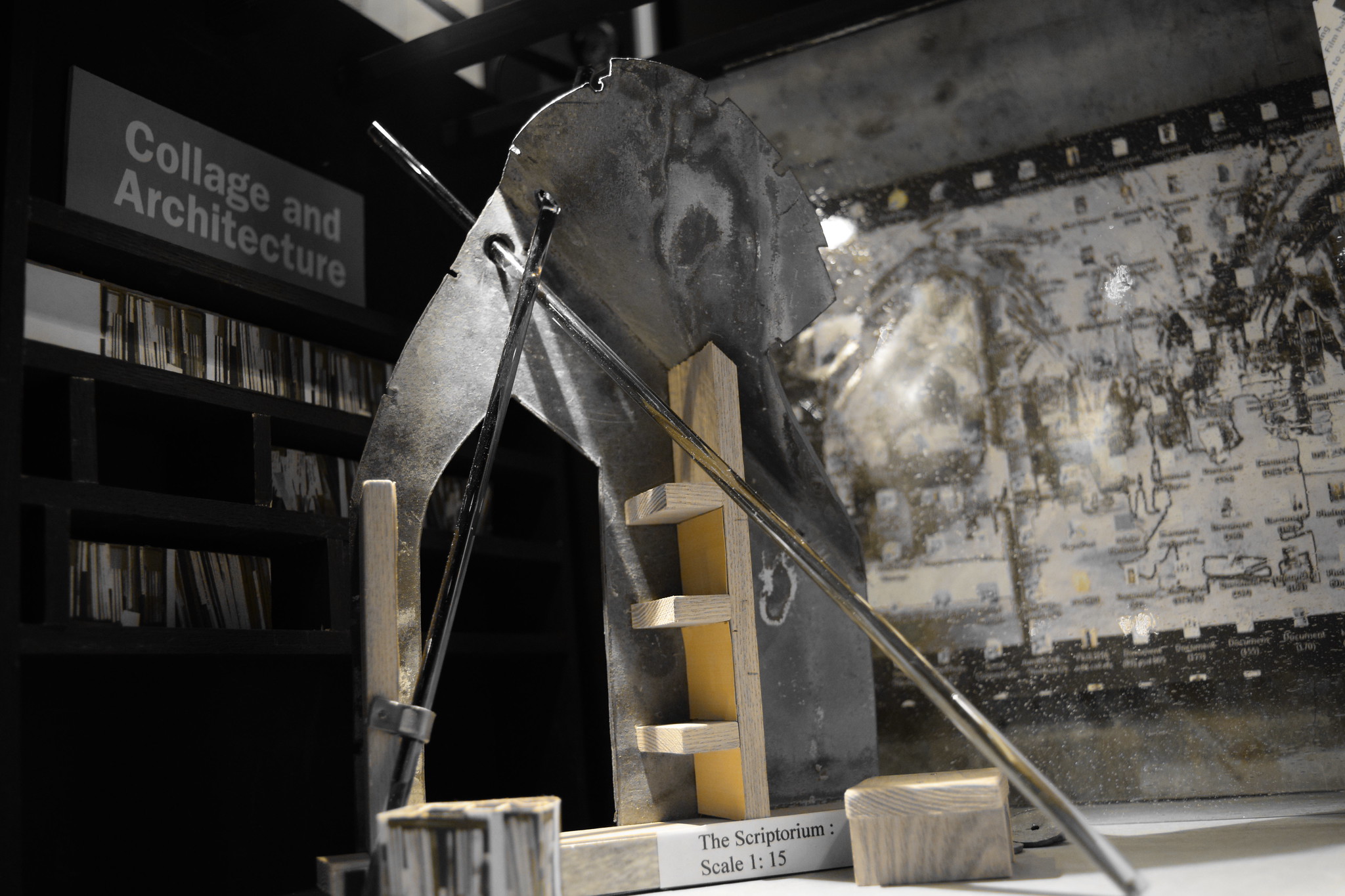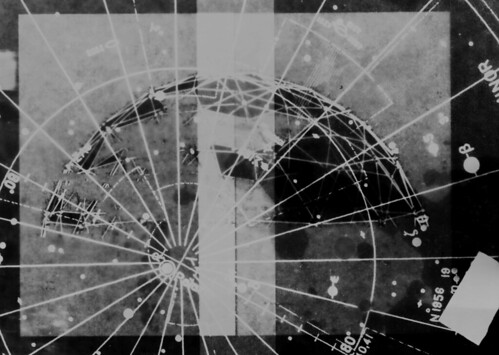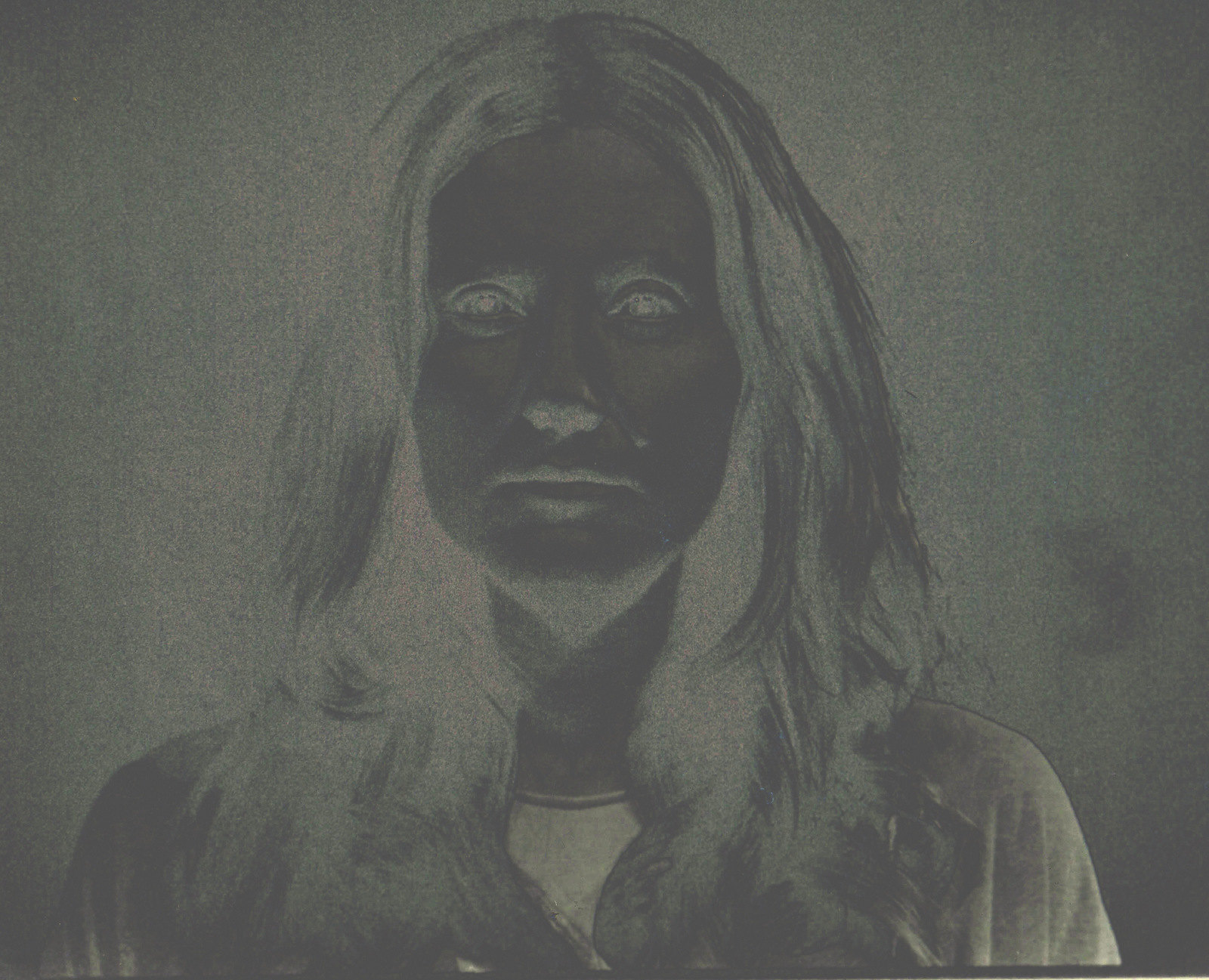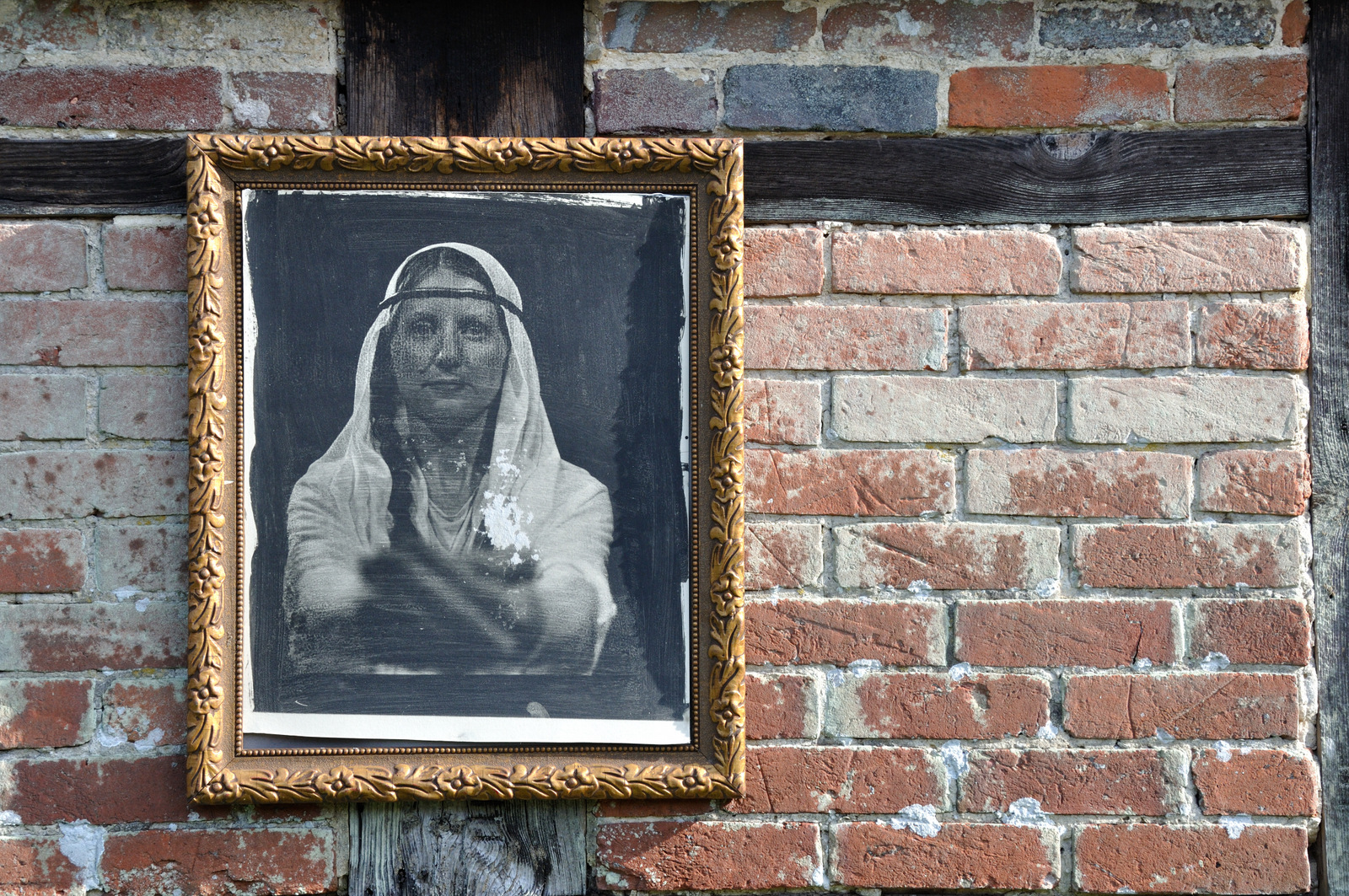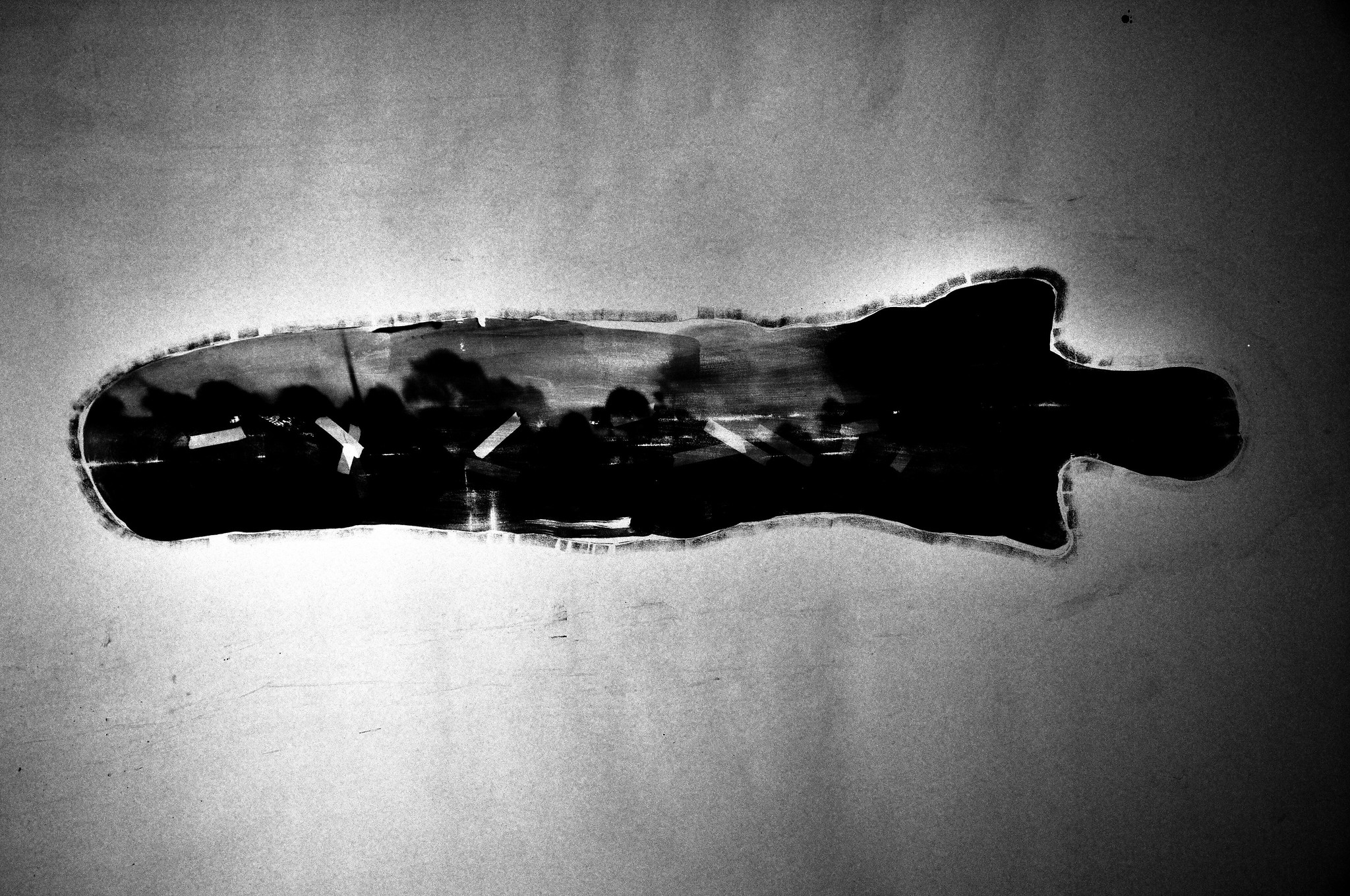The Social Condenser in Operation.
Five figures and a stature distributed evenly in its isotropic space; a picture of the socialized as opposed to the sociable.
Robin Evans,
Figures,Doors and Passages.
Building The Drawing
The drawing as analogue allows more subtle relations, of technique, material and process, to develop between drawing and building.
Immaterial Architecture
The Illegal Architect
Jonathan Hill
Oak Tree
Oil
Paper
Plaster
Rust
Sgratfito
Silence
Sound
Steel
Television
Weather
Frosted Light
Index of immaterial architectures
TRANSPARENCY : LITERAL AND PHENOMENAL
Colin Rowe, Robert Slutzky
Interactions of the Abstract Body
Josiah McElheny
Object Lesson
Interactive Abstract Body (Square)
The Spatial Body (After Fontana)
Tracing Eisenman
Stan Allen
Indexical Characters
FABRIC=MASS+ FORM
Alan Chandler
The interest in fabric formwork is in its deployment in a building process, which is faster than conventional formwork. Fabric formwork is inherently more sustainable due to the minimising of both concrete and shuttering, and more radically, allows the constructor to intervene in the process of casting even as the cast is taking place.
ANTI OBJECT
Kengo Kuma
We are composed of matter and live in the midst of matter. Our objective should not be to renounce matter, but to search for a form of matter other than objects.
What that form is called- ARCHITECTURE, GARDENS< TECHNOLOGY is not important.
ReThinking Matereriality
The engagement of mind with the material world
Elizabeth DeMarrais, Chris Gosden, Colin Renfrew
The Affordances of Things
Towards a Theory of Material Engagement
Aesthetics, Intelligence and Emotions
Relationality of Mind and Matter
Material Agency
Towards a Non-Anthropocentric Approach
Carl Knappett, Lambros Malafouris
At The Potter's Wheel : An Argument for Material Agency
We should replace our view of cognition as residing inside the potter's head, with that of cognition enacted at the potter's wheel.
The Neglected Networks of Material Agency : Artefacts, Pictures and Texts
Material Agency as Cognitive Scaffolding
The Cognitive Life of Things
Material Engagement and the Extended Mind
Lambros Malafouris, Colin Renfrew
Minds, Things and Materiality
Michael Wheeler
Communities of Things and Objects : A Spatial Perspective
Carl Knappett
Imagining the Cognitive Life of Things
Edwin Hutchins
Things and Their Embodied Environments
Architectures for Perception
Structuring Perception through Material Artifacts
Charles Goodwin
Leach Pottery, Studio and Museum
A Potter's Book
Bernard Leach
Adventures of the Fire, Vessels Through Time
Ceramic Pavilion
People make space, and space contains people
Ceramic space and life
Gordon Baldwin
Objects For A Landscape
David Whiting
Vessels-Spaces that cannot be drawn, rather they need to be experienced.
Imagining a Vessel in a Rock on a Beach, 2006,(charcoal on paper)
The Architecture of The Ceramic Vessel
The use of the vessel in the investigation of our world.
The exploration through the dichotomy of the analysis between exterior and interior, of one pot to another and from the message they convey.
MATERIAL MATTERS
ARCHITECTURE
AND MATERIAL PRACTICE
Katie Lloyd Thomas
PLENUMS : RETHINKING MATTER, GEOMETRY AND SUBJECTIVITY
Peg Rawes
ARCHITECTURE
IN THE AGE OF DIVIDED REPRESENTATION
The Question of Creativity in the Shadow of Production
Dalibor Vesely
The Nature of Communicative Space
Creativity in the Shadow of Modern Technology
The Rehabilitation of Fragment
Towards a Poetics of Architecture
The Projective Cast
Architecture and its Three Geometries
Robin Evans
Architects do not produce geometry, they consume it
Analysing ARCHITECTURE
Simon Unwin
Geometries of Being
Architecture as Making Frames
Space and Structure









